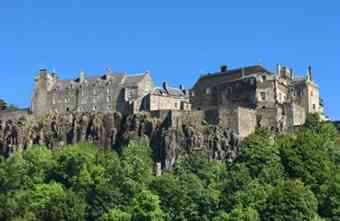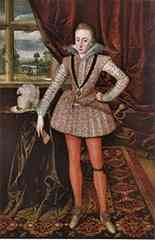PICTURE this – a rainy day in Renaissance Scotland and a bored young prince scratches “James 6” into plaster in a tower at Stirling Castle.
 The graffiti also says “God made Man and [Wom]an God made Man”.
The graffiti also says “God made Man and [Wom]an God made Man”.
More than 400 years later a cupboard near a window is removed and a sharp-eyed archaeologist spots the faint, spidery marks.
This reminder of a distant life is among my favourite discoveries from decades of investigations at Stirling Castle.
It was made by a member of my team a few years ago, in the Prince’s Tower, where heirs to the Stewart (later Stuart) monarchs were raised.
Not a family I’d have wished to be born into, they had everything the material world could offer, but were dogged by tragedy.
Research into the graffiti came up with some interesting facts.
 One is that the tower was refurbished around the time when James VI’s son, Prince Henry, was born in 1594.
One is that the tower was refurbished around the time when James VI’s son, Prince Henry, was born in 1594.
Another is that Stuart kings only started using Roman numerals (James VI rather than 6) following the union of the crowns in 1603.
So were these words inscribed by young Henry?
We can’t be at all sure – perhaps it was a playmate or a guard.
Yet we might be seeing a mischievous trace of a boy born to be king, but whose power and status could not save him when he was struck by typhoid aged just 18.
Exploring the castle’s past allows you to glimpse many lives and generations.
My first piece of work there was in the cold, snowy winter of 1977, excavating the French Spur, an outcrop created for artillery in the 1540s by Mary of Guise.
Over the years Historic Scotland has invited me to investigate the Great Hall of James IV, the Chapel Royal of James VI and, from 2004-08, the Renaissance royal palace of James V.
Each time we have uncovered fascinating details of life in the past.
It might be the fragments of bowls from which 17th century soldiers ate their meals, or something more.
In 1995 an underground pipe had to be dug up in an area known as the Governor’s Kitchen – a human leg bone was revealed.
 A full excavation uncovered 11 skeletons, including infants, in what may be the lost 12th century royal chapel of St Michael.
A full excavation uncovered 11 skeletons, including infants, in what may be the lost 12th century royal chapel of St Michael.
This was not a normal place to bury the dead and probably takes us back to extreme times in the 13th-15th centuries when warfare or epidemics made it impossible to leave the castle.
Research has shown that the burials involved a sequence of events over a long period of time.
One person was probably a knight, another a strongly-built woman, and both suffered terrible wounds from medieval weapons.
More investigations are underway that will tell us where most of them came from, and something about their diets.
Like with the graffiti, the skeletons suggest all sorts of possibilities and, as ever in archaeology, for every question answered a dozen more are raised.
** Join Professor Sue Black from the BBC’s History Cold Case series, and Gordon Ewart, for The Secrets of the Stirling Skeletons. They will explore the archaeological and forensic clues that tell us about the medieval people whose skeletons were discovered in the lost royal chapel.
The event, which is part of Scottish Archaeology Month, is on Wednesday, September 22, at 6.45pm. Tickets are £15 for adults and £12 for concessions or £10 and £8 respectively for members. They are available at the castle or by ringing 01786 431 312.
There will be two weekend events where Kirkdale Archaeology experts, including Mr Ewart, give talks on their excavations at the castle. These will be on September 18 and 19 and September 25 and 26 in the Nether Bailey and will be included in the entry fee to the castle.
As part of Historic Scotland’s preparations for the reopening of the refurbished Renaissance royal palace within the castle, the main ticket office and shop are being extended. This will cater for the increased visitor numbers which are expected in future. From later this month all ticket sales will be from the esplanade shop. The main shop and ticket office within the castle walls will be closed over the winter but will open again at Easter 2011.
Author: Gordon Ewart | Source: Stirling Observer [September 01, 2010]